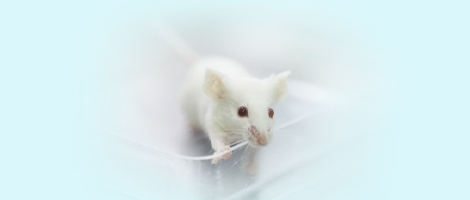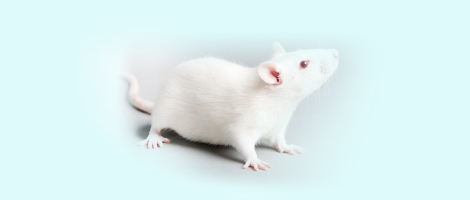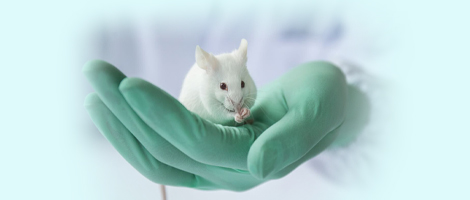













实验动物与比较医学 ›› 2022, Vol. 42 ›› Issue (1): 3-10.DOI: 10.12300/j.issn.1674-5817.2021.170
所属专题: 专家论坛; 实验动物资源开发与利用
收稿日期:2021-11-15
修回日期:2022-01-26
出版日期:2022-02-25
发布日期:2022-02-25
作者简介:于士颜(1981—), 男, 博士, 研究员, 研究方向: 消化道黏膜屏障发育、修复及其相关疾病。 E-mail: yulab@sjtu.edu.cn
基金资助:Received:2021-11-15
Revised:2022-01-26
Published:2022-02-25
Online:2022-02-25
Contact:
YU Shiyan, E-mail: yulab@sjtu.edu.cn摘要:
机体的消化道黏膜定殖着巨量的共生微生物,这些微生物通过与宿主相互作用,影响宿主的健康与疾病。近年来,随着高通量测序与培养组学等技术的发展,大量与健康或疾病相关但以前未充分研究的微生物被鉴定出来。研究这些微生物对宿主黏膜免疫生理与病理生理的影响及相关分子机制,对防治相关疾病具有重要意义。小鼠模型是系统性研究宿主与微生物相互作用的重要平台。本文介绍近年来利用小鼠模型在消化道黏膜免疫及感染性疾病研究中的部分重要进展与挑战,并展望综合利用遗传工程与菌群移植或环境暴露等优化小鼠模型的研究前景,以期促进与微生物紧密相关的健康与疾病的转化研究。
中图分类号:
于士颜. 小鼠模型在消化道黏膜免疫及感染性疾病研究中的应用进展[J]. 实验动物与比较医学, 2022, 42(1): 3-10. DOI: 10.12300/j.issn.1674-5817.2021.170.
Shiyan YU. Advances in the Application of Mouse Models to Study Digestive Mucosal Immunity and Infectious Diseases[J]. Laboratory Animal and Comparative Medicine, 2022, 42(1): 3-10. DOI: 10.12300/j.issn.1674-5817.2021.170.
| 1 | FISHER M C, HENK D A, BRIGGS C J, et al. Emerging fungal threats to animal, plant and ecosystem health[J]. Nature, 2012, 484(7393):186-194. DOI:10.1038/nature10947 . |
| 2 | GROUSSIN M, MAZEL F, ALM E J. Co-evolution and co-speciation of host-gut bacteria systems[J]. Cell Host Microbe, 2020, 28(1):12-22. DOI:10.1016/j.chom.2020.06.013 . |
| 3 | CHO I, BLASER M J. The human microbiome: at the interface of health and disease[J]. Nat Rev Genet, 2012, 13(4):260-270. DOI:10.1038/nrg3182 . |
| 4 | CLEMENTE J C, URSELL L K, PARFREY L W, et al. The impact of the gut microbiota on human health: an integrative view[J]. Cell, 2012, 148(6):1258-1270. DOI:10.1016/j.cell.2012.01.035 . |
| 5 | SOMMER F, BÄCKHED F. The gut microbiota: Masters of host development and physiology[J]. Nat Rev Microbiol, 2013, 11(4):227-238. DOI:10.1038/nrmicro2974 . |
| 6 | FALONY G, VIEIRA-SILVA S, RAES J. Microbiology meets big data: the case of gut microbiota-derived trimethylamine[J]. Annu Rev Microbiol, 2015, 69:305-321. DOI:10.1146/annurev-micro-091014-104422 . |
| 7 | DZUTSEV A, BADGER J H, PEREZ-CHANONA E, et al. Microbes and cancer[J]. Annu Rev Immunol, 2017, 35:199-228. DOI:10.1146/annurev-immunol-051116-052133 . |
| 8 | FERREYRA J A, WU K J, HRYCKOWIAN A J, et al. Gut microbiota-produced succinate promotes C. difficile infection after antibiotic treatment or motility disturbance[J]. Cell Host Microbe, 2014, 16(6):770-777. DOI:10.1016/j.chom. 2014.11.003 . |
| 9 | NG K M, FERREYRA J A, HIGGINBOTTOM S K, et al. Microbiota-liberated host sugars facilitate post-antibiotic expansion of enteric pathogens[J]. Nature, 2013, 502(7469):96-99. DOI:10.1038/nature12503 . |
| 10 | JONES M K, WATANABE M, ZHU S, et al. Enteric bacteria promote human and mouse Norovirus infection of B cells[J]. Science, 2014, 346(6210):755-759. DOI:10.1126/science. 1257147 . |
| 11 | BALDRIDGE M T, NICE T J, MCCUNE B T, et al. Commensal microbes and interferon-λ determine persistence of enteric murine norovirus infection[J]. Science, 2015, 347(6219):266-269. DOI:10.1126/science.1258025 . |
| 12 | KUCZYNSKI J, LAUBER C L, WALTERS W A, et al. Experimental and analytical tools for studying the human microbiome[J]. Nat Rev Genet, 2011, 13(1):47-58. DOI:10.1038/nrg3129 . |
| 13 | KOSTIC A D, HOWITT M R, GARRETT W S. Exploring host-microbiota interactions in animal models and humans[J]. Genes Dev, 2013, 27(7):701-718. DOI:10.1101/gad.212522.112 . |
| 14 | MASOPUST D, SIVULA C P, JAMESON S C. Of mice, dirty mice, and men: using mice to understand human immunology[J]. J Immunol, 2017, 199(2):383-388. DOI:10.4049/jimmunol.1700453 . |
| 15 | REESE T A, BI K, KAMBAL A, et al. Sequential infection with common pathogens promotes human-like immune gene expression and altered vaccine response[J]. Cell Host Microbe, 2016, 19(5):713-719. DOI:10.1016/j.chom.2016.04.003 . |
| 16 | BEURA L K, HAMILTON S E, BI K, et al. Normalizing the environment recapitulates adult human immune traits in laboratory mice[J]. Nature, 2016, 532(7600):512-516. DOI:10.1038/nature17655 . |
| 17 | ROSSHART S P, HERZ J, VASSALLO B G, et al. Laboratory mice born to wild mice have natural microbiota and model human immune responses[J]. Science, 2019, 365(6452): eaaw4361. DOI:10.1126/science.aaw4361 . |
| 18 | LIN J D, DEVLIN J C, YEUNG F, et al. Rewilding Nod2 and Atg16l1 mutant mice uncovers genetic and environmental contributions to microbial responses and immune cell composition[J]. Cell Host Microbe, 2020, 27(5):830-840.e4. DOI:10.1016/j.chom.2020.03.001 . |
| 19 | ROSSHART S P, VASSALLO B G, ANGELETTI D, et al. Wild mouse gut microbiota promotes host fitness and improves disease resistance[J]. Cell, 2017, 171(5):1015-1028.e13. DOI:10.1016/j.cell.2017.09.016 . |
| 20 | FIEGE J K, BLOCK K E, PIERSON M J, et al. Mice with diverse microbial exposure histories as a model for preclinical vaccine testing[J]. Cell Host Microbe, 2021, 29(12):1815-1827.e6. DOI:10.1016/j.chom.2021.10.001 . |
| 21 | KERNBAUER E, DING Y, CADWELL K. An enteric virus can replace the beneficial function of commensal bacteria[J]. Nature, 2014, 516(7529):94-98. DOI:10.1038/nature13960 . |
| 22 | CADWELL K, PATEL K K, MALONEY N S, et al. Virus-plus-susceptibility gene interaction determines Crohn's disease gene Atg16L1 phenotypes in intestine[J]. Cell, 2010, 141(7):1135-1145. DOI:10.1016/j.cell.2010.05.009 . |
| 23 | HAJISHENGALLIS G, LIANG S, PAYNE M A, et al. Low-abundance biofilm species orchestrates inflammatory periodontal disease through the commensal microbiota and complement[J]. Cell Host Microbe, 2011, 10(5):497-506. DOI:10.1016/j.chom.2011.10.006 . |
| 24 | WEISSBROD L, MARSHALL F B, VALLA F R, et al. Origins of house mice in ecological niches created by settled hunter-gatherers in the Levant 15, 000 y ago[J]. Proc Natl Acad Sci USA, 2017, 114(16):4099-4104. DOI:10.1073/pnas.1619137114 . |
| 25 | GOODMAN A L, KALLSTROM G, FAITH J J, et al. Extensive personal human gut microbiota culture collections characterized and manipulated in gnotobiotic mice[J]. Proc Natl Acad Sci USA, 2011, 108(15):6252-6257. DOI:10.1073/pnas.1102938108 . |
| 26 | KOREN N, ZUBEIDAT K, SABA Y, et al. Maturation of the neonatal oral mucosa involves unique epithelium-microbiota interactions[J]. Cell Host Microbe, 2021, 29(2):197-209.e5. DOI:10.1016/j.chom.2020.12.006 . |
| 27 | EARLE K A, BILLINGS G, SIGAL M, et al. Quantitative imaging of gut microbiota spatial organization[J]. Cell Host Microbe, 2015, 18(4):478-488. DOI:10.1016/j.chom.2015.09.002 . |
| 28 | LARSEN S B, COWLEY C J, FUCHS E. Epithelial cells: liaisons of immunity[J]. Curr Opin Immunol, 2020, 62:45-53. DOI:10.1016/j.coi.2019.11.004 . |
| 29 | BIRCHENOUGH G M H, NYSTRÖM E E L, JOHANSSON M E V, et al. A sentinel goblet cell guards the colonic crypt by triggering Nlrp6-dependent Muc2 secretion[J]. Science, 2016, 352(6293):1535-1542. DOI:10.1126/science.aaf7419 . |
| 30 | SCHNEIDER C, O'LEARY C E, MOLTKE J VON, et al. A metabolite-triggered tuft cell-ILC2 circuit drives small intestinal remodeling[J]. Cell, 2018, 174(2):271-284.e14. DOI:10.1016/j.cell.2018.05.014 . |
| 31 | MOLTKE J VON, JI M, LIANG H E, et al. Tuft-cell-derived IL-25 regulates an intestinal ILC2-epithelial response circuit[J]. Nature, 2016, 529(7585):221-225. DOI:10.1038/nature16161 . |
| 32 | YU S Y, BALASUBRAMANIAN I, LAUBITZ D, et al. Paneth cell-derived lysozyme defines the composition of mucolytic microbiota and the inflammatory tone of the intestine[J]. Immunity, 2020, 53(2):398-416.e8. DOI:10.1016/j.immuni. u2020.07.010 . |
| 33 | VAISHNAVA S, YAMAMOTO M, SEVERSON K M, et al. The antibacterial lectin RegIIIgamma promotes the spatial segregation of microbiota and host in the intestine[J]. Science, 2011, 334(6053):255-258. DOI:10.1126/science. 1209791 . |
| 34 | IVANOV I I, ATARASHI K, MANEL N, et al. Induction of intestinal Th17 cells by segmented filamentous bacteria[J]. Cell, 2009, 139(3):485-498. DOI:10.1016/j.cell.2009.09.033 . |
| 35 | IVANOV I I, MCKENZIE B S, ZHOU L, et al. The orphan nuclear receptor RORgammat directs the differentiation program of proinflammatory IL-17+ T helper cells[J]. Cell, 2006, 126(6):1121-1133. DOI:10.1016/j.cell.2006.07.035 . |
| 36 | IVANOV I I, DE LLANOS FRUTOS R, MANEL N, et al. Specific microbiota direct the differentiation of IL-17-producing T-helper cells in the mucosa of the small intestine[J]. Cell Host Microbe, 2008, 4(4):337-349. DOI:10.1016/j.chom.2008.09.009 . |
| 37 | ATARASHI K, TANOUE T, ANDO M, et al. Th17 cell induction by adhesion of microbes to intestinal epithelial cells[J]. Cell, 2015, 163(2):367-380. DOI:10.1016/j.cell.2015.08.058 . |
| 38 | SALZMAN N H, HUNG K, HARIBHAI D, et al. Enteric defensins are essential regulators of intestinal microbial ecology[J]. Nat Immunol, 2010, 11(1):76-83. DOI:10.1038/ni.1825 . |
| 39 | CERVANTES-BARRAGAN L, CHAI J N, TIANERO M D, et al. Lactobacillus reuteri induces gut intraepithelial CD4+ CD8αα+ T cells[J]. Science, 2017, 357(6353):806-810. DOI:10.1126/science.aah5825 . |
| 40 | HOWITT M R, LAVOIE S, MICHAUD M, et al. Tuft cells, taste-chemosensory cells, orchestrate parasite type 2 immunity in the gut[J]. Science, 2016, 351(6279):1329-1333. DOI:10.1126/science.aaf1648 . |
| 41 | LEI W W, REN W W, OHMOTO M, et al. Activation of intestinal tuft cell-expressed Sucnr1 triggers type 2 immunity in the mouse small intestine[J]. Proc Natl Acad Sci USA, 2018, 115(21):5552-5557. DOI:10.1073/pnas.1720758115 . |
| 42 | ATARASHI K, TANOUE T, OSHIMA K, et al. Treg induction by a rationally selected mixture of Clostridia strains from the human microbiota[J]. Nature, 2013, 500(7461):232-236. DOI:10.1038/nature12331 . |
| 43 | FURUSAWA Y, OBATA Y, FUKUDA S, et al. Commensal microbe-derived butyrate induces the differentiation of colonic regulatory T cells[J]. Nature, 2013, 504(7480):446-450. DOI:10.1038/nature12721 . |
| 44 | ATARASHI K, TANOUE T, SHIMA T, et al. Induction of colonic regulatory T cells by indigenous Clostridium species[J]. Science, 2011, 331(6015):337-341. DOI:10.1126/science.1198469 . |
| 45 | TANOUE T, MORITA S, PLICHTA D R, et al. A defined commensal consortium elicits CD8 T cells and anti-cancer immunity[J]. Nature, 2019, 565(7741):600-605. DOI:10.1038/s41586-019-0878-z . |
| 46 | LEVY M, KOLODZIEJCZYK A A, THAISS C A, et al. Dysbiosis and the immune system[J]. Nat Rev Immunol, 2017, 17(4):219-232. DOI:10.1038/nri.2017.7 . |
| 47 | KAPLAN G G, NG S C. Understanding and preventing the global increase of inflammatory bowel disease[J]. Gastroenterology, 2017, 152(2):313-321.e2. DOI:10.1053/j.gastro.2016.10.020 . |
| 48 | KHOR B, GARDET A, XAVIER R J. Genetics and pathogenesis of inflammatory bowel disease[J]. Nature, 2011, 474(7351):307-317. DOI:10.1038/nature10209 . |
| 49 | JOSTINS L, RIPKE S, WEERSMA R K, et al. Host-microbe interactions have shaped the genetic architecture of inflammatory bowel disease[J]. Nature, 2012, 491(7422):119-124. DOI:10.1038/nature11582 . |
| 50 | DE LANGE K M, MOUTSIANAS L, LEE J C, et al. Genome-wide association study implicates immune activation of multiple integrin genes in inflammatory bowel disease[J]. Nat Genet, 2017, 49(2):256-261. DOI:10.1038/ng.3760 . |
| 51 | HUANG H L, FANG M, JOSTINS L, et al. Fine-mapping inflammatory bowel disease loci to single-variant resolution[J]. Nature, 2017, 547(7662):173-178. DOI:10.1038/nature22969 . |
| 52 | RAMANAN D, TANG M S, BOWCUTT R, et al. Bacterial sensor Nod2 prevents inflammation of the small intestine by restricting the expansion of the commensal Bacteroides vulgatus[J]. Immunity, 2014, 41(2):311-324. DOI:10.1016/j.immuni.2014.06.015 . |
| 53 | BRITTON G J, CONTIJOCH E J, MOGNO I, et al. Microbiotas from humans with inflammatory bowel disease alter the balance of gut Th17 and RORγt+ regulatory T cells and exacerbate colitis in mice[J]. Immunity, 2019, 50(1):212-224.e4. DOI:10.1016/j.immuni.2018.12.015 . |
| 54 | MATHUR R, OH H, ZHANG D K, et al. A mouse model of Salmonella typhi infection[J]. Cell, 2012, 151(3):590-602. DOI:10.1016/j.cell.2012.08.042 . |
| 55 | LAZEAR H M, GOVERO J, SMITH A M, et al. A mouse model of zika virus pathogenesis[J]. Cell Host Microbe, 2016, 19(5):720-730. DOI:10.1016/j.chom.2016.03.010 . |
| 56 | SHRESTA S, SHARAR K L, PRIGOZHIN D M, et al. Murine model for dengue virus-induced lethal disease with increased vascular permeability[J]. J Virol, 2006, 80(20):10208-10217. DOI:10.1128/JVI.00062-06 . |
| 57 | LECUIT M, VANDORMAEL-POURNIN S, LEFORT J, et al. A transgenic model for listeriosis: role of internalin in crossing the intestinal barrier[J]. Science, 2001, 292(5522):1722-1725. DOI:10.1126/science.1059852 . |
| 58 | MCCRAY B A, SKORDALAKES E, TAYLOR J P. Disease mutations in Rab7 result in unregulated nucleotide exchange and inappropriate activation[J]. Hum Mol Genet, 2010, 19(6):1033-1047. DOI:10.1093/hmg/ddp567 . |
| 59 | BAO L L, DENG W, HUANG B Y, et al. The pathogenicity of SARS-CoV-2 in hACE2 transgenic mice[J]. Nature, 2020, 583(7818):830-833. DOI:10.1038/s41586-020-2312-y . |
| 60 | CHOUDHARY S K, ARCHIN N M, CHEEMA M, et al. Latent HIV-1 infection of resting CD4+ T cells in the humanized Rag2-/- γ c-/- mouse[J]. J Virol, 2012, 86(1):114-120. DOI:10.1128/jvi.05590-11 . |
| 61 | MOTA J, RICO-HESSE R. Humanized mice show clinical signs of dengue fever according to infecting virus genotype[J]. J Virol, 2009, 83(17):8638-8645. DOI:10.1128/JVI.00581-09 . |
| 62 | JIMÉNEZ-DÍAZ M B, MULET T, VIERA S, et al. Improved murine model of malaria using plasmodium falciparum competent strains and non-myelodepleted NOD-scid IL2R gamma null mice engrafted with human erythrocytes[J]. Antimicrob Agents Chemother, 2009, 53(10):4533-4536. DOI:10.1128/AAC.00519-09 . |
| 63 | WASHBURN M L, BILITY M T, ZHANG L G, et al. A humanized mouse model to study hepatitis C virus infection, immune response, and liver disease[J]. Gastroenterology, 2011, 140(4):1334-1344. DOI:10.1053/j.gastro.2011.01.001 . |
| 64 | WAHL A, DE C, FERNANDEZ M A, et al. Precision mouse models with expanded tropism for human pathogens[J]. Nat Biotechnol, 2019, 37(10):1163-1173. DOI:10.1038/s41587-019-0225-9 . |
| 65 | SUN J, LI N, OH K S, et al. Comprehensive RNAi-based screening of human and mouse TLR pathways identifies species-specific preferences in signaling protein use[J]. Sci Signal, 2016, 9(409): ra3. DOI:10.1126/scisignal.aab2191 . |
| 66 | YUE F, CHENG Y, BRESCHI A, et al. A comparative encyclopedia of DNA elements in the mouse genome[J]. Nature, 2014, 515(7527):355-364. DOI:10.1038/nature13992 . |
| 67 | CHEN Q F, KHOURY M, CHEN J Z. Expression of human cytokines dramatically improves reconstitution of specific human-blood lineage cells in humanized mice[J]. Proc Natl Acad Sci USA, 2009, 106(51):21783-21788. DOI:10.1073/pnas. 0912274106 . |
| 68 | CHAPPAZ S, FINKE D. The IL-7 signaling pathway regulates lymph node development independent of peripheral lymphocytes[J]. J Immunol, 2010, 184(7):3562-3569. DOI:10.4049/jimmunol.0901647 . |
| 69 | LI Y, MASSE-RANSON G, GARCIA Z, et al. A human immune system mouse model with robust lymph node development[J]. Nat Methods, 2018, 15(8):623-630. DOI:10.1038/s41592-018-0071-6 . |
| 70 | FISCHBACH M A. Microbiome: focus on causation and mechanism[J]. Cell, 2018, 174(4):785-790. DOI:10.1016/j.cell. 2018.07.038 . |
| 71 | MIURA H, QUADROS R M, GURUMURTHY C B, et al. Easi-CRISPR for creating knock-in and conditional knockout mouse models using long ssDNA donors[J]. Nat Protoc, 2018, 13(1):195-215. DOI:10.1038/nprot.2017.153 . |
| 72 | ANZALONE A V, RANDOLPH P B, DAVIS J R, et al. Search-and-replace genome editing without double-strand breaks or donor DNA[J]. Nature, 2019, 576(7785):149-157. DOI:10.1038/s41586-019-1711-4 . |
| 73 | KOMOR A C, KIM Y B, PACKER M S, et al. Programmable editing of a target base in genomic DNA without double-stranded DNA cleavage[J]. Nature, 2016, 533(7603):420-424. DOI:10.1038/nature17946 . |
| 74 | GAUDELLI N M, KOMOR A C, REES H A, et al. Programmable base editing of A•T to G•C in genomic DNA without DNA cleavage[J]. Nature, 2017, 551(7681):464-471. DOI:10.1038/nature24644 . |
| 75 | SCHUTGENS F, CLEVERS H. Human organoids: tools for understanding biology and treating diseases[J]. Annu Rev Pathol, 2020, 15:211-234. DOI:10.1146/annurev-pathmechdis-012419-032611 . |
| [1] | 贡磊磊, 王晓霞, 封学伟, 李心蕾, 赵涵, 张雪艳, 冯欣. 不同浓度环磷酰胺诱导早发性卵巢功能不全小鼠模型及作用机制研究[J]. 实验动物与比较医学, 2025, 45(4): 403-410. |
| [2] | 姜娟, 宋宁, 连文博, 邵丛丛, 顾文文, 石燕. 两种浓度乙醇溶液灌注建立小鼠宫腔粘连模型的组织病理和分子病理表型比较[J]. 实验动物与比较医学, 2025, 45(4): 393-402. |
| [3] | 沈黄奕, 黄宇飞, 杨云鹏. 实验动物肠道菌群特征分析及性别差异性的研究进展[J]. 实验动物与比较医学, 2025, 45(3): 349-359. |
| [4] | 罗莲莲, 袁艳春, 王俊岭, 时广森. 肌萎缩侧索硬化症小鼠模型研究进展[J]. 实验动物与比较医学, 2025, 45(3): 290-299. |
| [5] | 潘钱家, 葛峻沂, 胡楠, 华飞, 顾敏. 基于16S rRNA测序的2型糖尿病db/db小鼠模型口腔菌群差异分析[J]. 实验动物与比较医学, 2025, 45(2): 147-157. |
| [6] | 张飞燕, 刘超, 吕龙宝. 基于高通量测序技术分析人工圈养成年蜂猴的粪便微生物多样性[J]. 实验动物与比较医学, 2024, 44(3): 297-304. |
| [7] | 许琴, 倪艳, 是文辉, 李建瑛, 刘江伟, 赵红琼, 徐新明. SPF级雄性SD大鼠回肠与结肠菌群结构比较分析[J]. 实验动物与比较医学, 2023, 43(1): 53-60. |
| [8] | 王晓钰, 蒋升瑶, 蔺智兵, 崔立. 基于糖尿病-肿瘤小鼠模型研究糖尿病对结直肠癌/乳腺癌进展及肠道菌群的影响[J]. 实验动物与比较医学, 2021, 41(6): 469-479. |
| [9] | 姚玎, 周晶, 严国锋, 王会阳, 汪雅荻, 马政文. 盐敏感性高血压小鼠模型的建立[J]. 实验动物与比较医学, 2020, 40(4): 314-. |
| [10] | 柴文君, 孙 磊, 刘晓丽, 潘洪玉, 郭天安, 徐 烨, 闫明霞. 超声引导下左心室内注射人肺癌细胞建立骨转移小鼠模型[J]. 实验动物与比较医学, 2020, 40(3): 183-. |
| [11] | 蒋红利, 马红叶, 薛瑾虹, 孙凌霜, 陈蕾. 绒毛蛋白1在单侧肾切除Habu肾炎小鼠模型中的作用[J]. 实验动物与比较医学, 2020, 40(1): 1-8. |
| [12] | 李慧. Foxp2小鼠模型中发育性言语障碍的分子遗传学研究[J]. 实验动物与比较医学, 2019, 39(4): 331-336. |
| [13] | 何一旻, 顾鸣敏. Myh13敲除小鼠表型的初步分析[J]. 实验动物与比较医学, 2019, 39(3): 193-200. |
| [14] | 沈艳, 王韵, 张汝, 阮铮, 毛建华. 两种小鼠肺癌模型的构建及Micro PET-CT观察[J]. 实验动物与比较医学, 2019, 39(1): 39-45. |
| [15] | 许琴, 董翔, 李建瑛, 张东辉, 李佳佳, 杨亚萍, 杨秋月, 是文辉, 马娜, 宋来阳, 刘江伟. 姜黄素预处理对沙漠干热中暑大鼠回肠、结肠内容物菌群表达量的影响[J]. 实验动物与比较医学, 2018, 38(6): 440-445. |
| 阅读次数 | ||||||
|
全文 |
|
|||||
|
摘要 |
|
|||||
